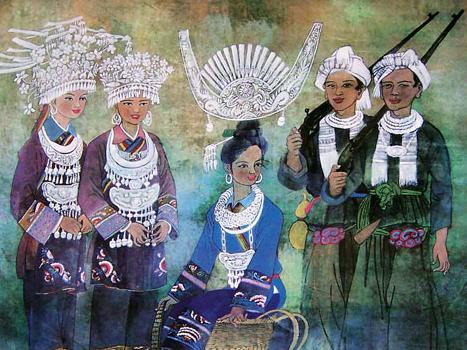
The Miaos, with a population of 7,398,035, are mainly distributed in Guizhou, Hunan, Yunnan provinces and the Guangxi Zhuang Autonomous Region.
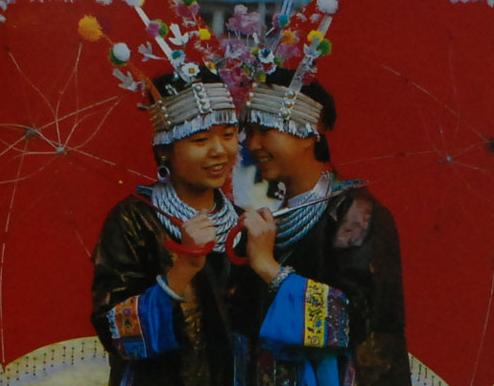
Miao women, living in Anning, Yunnan Province, and their ornaments.
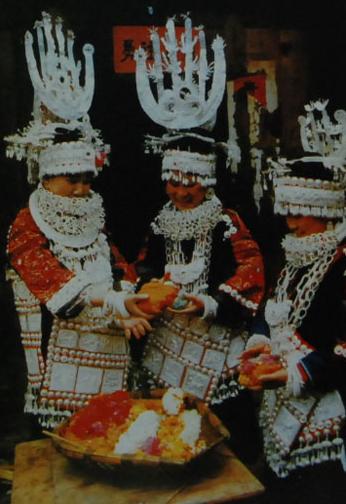
Once a girt is born to a Miao family, her parents will start to save money for their daughter to make silver ornaments. A complete set of silver ornaments normally weighs several kilograms. The picture shows Miao women sharing multicolored glutinous rice on the Sisters' Day.
On the flatland of the warm and rainy Miaoling and Wuling mountains, the Miaos grow rice, maize, wheat, cotton, tobacco, millet, rape, and tung trees. The mountain areas where the Miaos make their homes also have abundant timber and mineral resources.
The present Miao people can be traced back to the primitive Chi You Tribe living in the Central Plains several thousand years ago. In the Shang and Zhou periods, forefathers of the Miaos established the Three- Miaos State in the middle and lower reaches of the Changjiang River planting rice for food. For some reasons, these people had moved for several times. The migrating route was approximately from the Yellow River Valley, to Hunan, Guizhou and Yunnan.
The Miao language belongs to the Miao-Yao group in the Sino-Tibetan family. Formerly, the Miao people had no script. Later, in the 1950s, a Romanization system for the Miao language was created. At present most Miao people use Chinese.
The Miao songs and dances have a long history. The complicated Reed Pipe Dance Ls very popular. Their cross-stitch work, embroidery, batiks, brocades and ornaments are exquisite folk arts and enjoy high fame. The Miaos have many festivals. The most important are the New Year's Day of the Miaos, the Eighth Day of the Fifth Month of lunar year, and the Dragon-boat Festival.
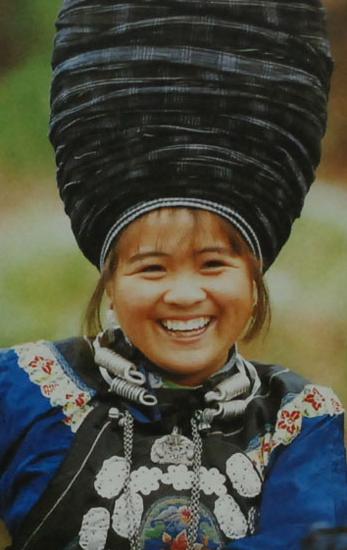
A Miao woman living in Xiangxi of Hunan Province.
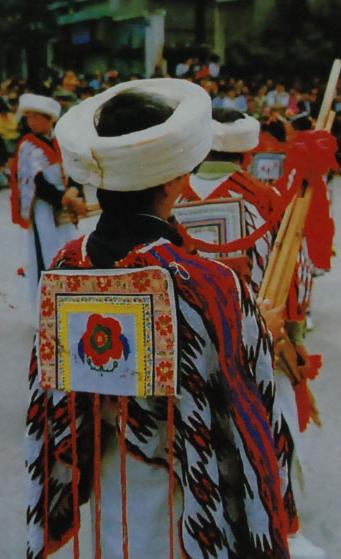
Miao men, living in Zhaotong Prefecture of Yunnan Province, gather to play reed pipes in their bright-colored clothing.
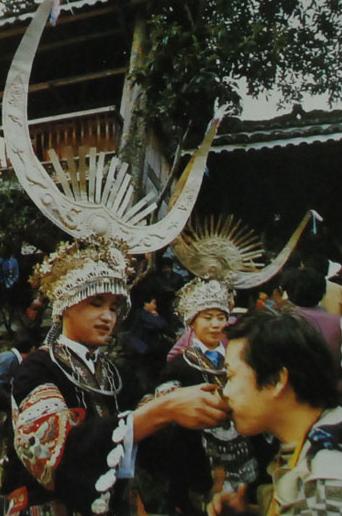
When a guest comes to a Miao village, he must empty the block-the- way wine before he is invited to their houses.
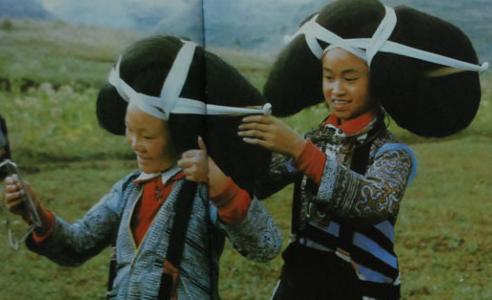
Miao women, living in Zhijin of Guizhou Province, dress their hair up with black knitting wool to form a supper large coiffure.
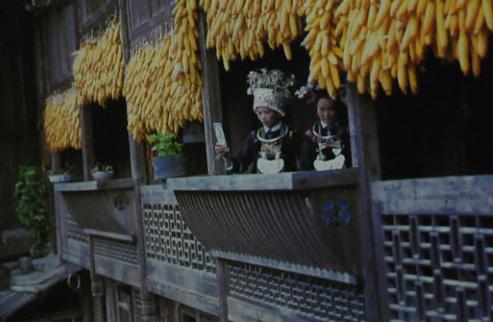
Decking up in holiday array.
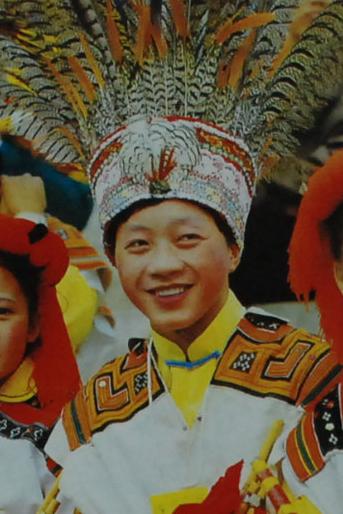
A young man living in the Wumeng mountain area in his rich Miao attire.
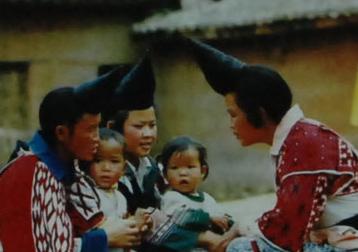
Miao women, living in Anning,Yunnan Province, and their ornaments.
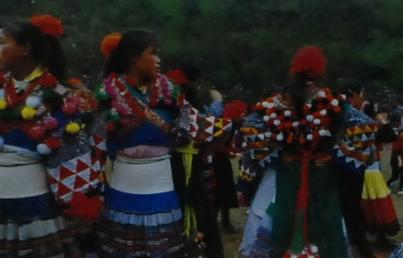
Hua Miao children, living in Anshun, Gulzhou Province, and their dress.
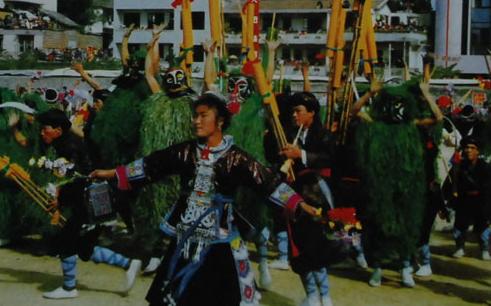
The scarecrow dance.





